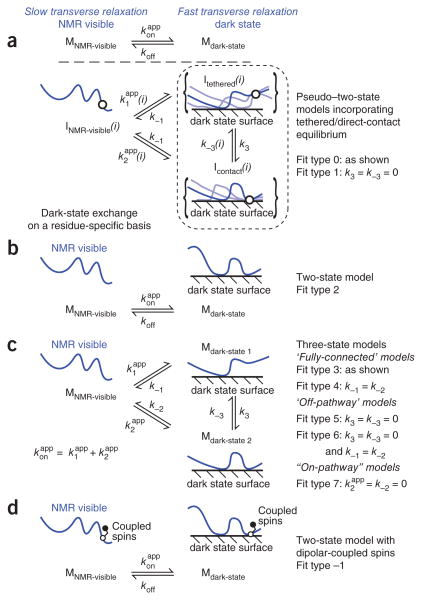Figure 1.
Summary of the kinetic models available in the DESTfit program. (a) Pseudo–two-state models in which the equilibrium between the NMR-visible and dark states is described by a single and koff, connecting the free (MNMR-visible) and dark (Mdark-state) states of the exchanging species, whereas the dark state is partitioned into residue-specific equilibria of ensembles of tethered (Itethered) and direct-contact (Icontact) states for residue i, such that the concentration of INMR-visible = MNMR-visible for all i (i.e., M refers to the entire molecule, whereas I provides a description on a residue basis). (b) A two-state model, described by a single and koff. (c) Three-state models in which two thermodynamically distinct dark states are populated, including fully connected (Fit types 3 and 4), ‘off-pathway’ (Fit types 5 and 6) and ‘on-pathway’ (Fit type 7) models. (d) A two-state model incorporating the effect of dipolar coupling between spins of different chemical shifts, most useful for analysis of 1H DEST data.

